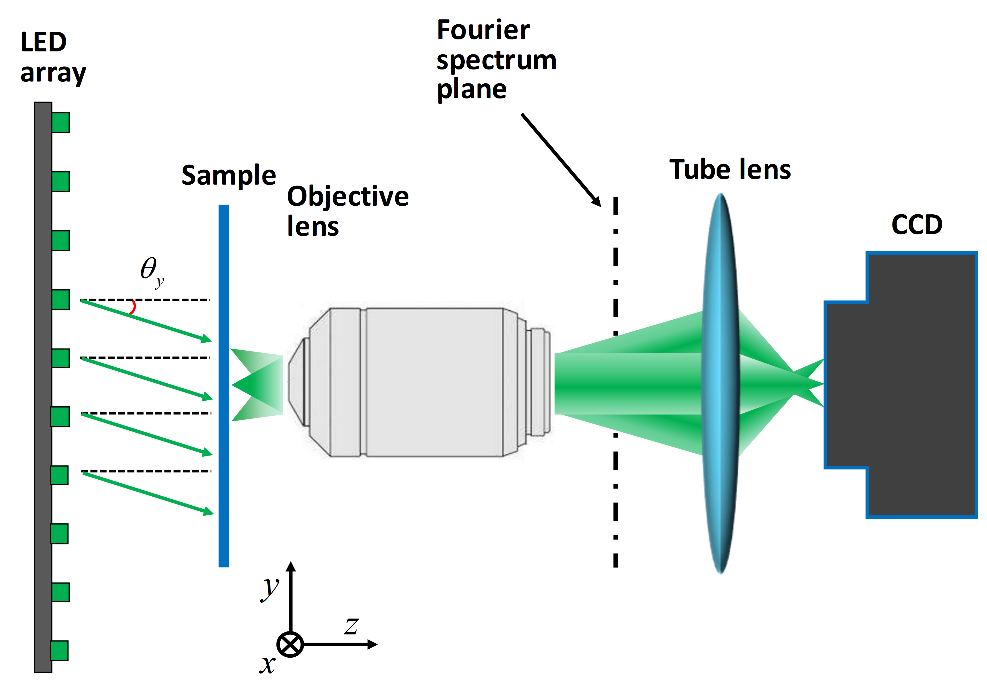
In a recent study published in Opt. Express., the liquid crystal optical research group from the Changchun Institute of Optics, Fine Mechanics and Physics (CIOMP) of the Chinese Academy of Sciences reported a new technology for data-driven image reconstruction. This technology, named Fourier ptychographic microscopy (FPM), provides a coherent imaging approach to achieve a wide-field and high-resolution result by circumventing optical space-bandwidth product (SBP) of the system.
The system structure of FPM is similar to an optical microscope, except that the light source is replaced by an array of LEDs. By activating different LED in a specific sequence, a series of low resolution (LR) images could be obtained by the camera.
Since different low-resolution images contain information from different sub-regions of the sample spectrum, through the optimization algorithm, the information can be fused in the frequency domain to obtain the high-resolution amplitude and phase images that exceed the diffraction limit of the objective lens and retain the original field of view.
Traditional reconstruction algorithms of FPM usually consider the transfer function of the system as the coherent transfer function (CTF) by default. However, due to partial coherence of the LED and the aberrations exist in the system, simple adoption of CTF as the transfer function will degrade the convergence and robustness of the algorithm, resulting in convergence error and low quality of the reconstructed images. This kind of problem is particularly noticeable at the edge field of view where the aberrations are non-negligible.
In this study, the research group proposed a reconstructed algorithm based on neural network which combines the recover process of the pupil function, called FINN-P. The algorithm can correctly recover the pupil function of the system and achieve better reconstruction results.
In addition, the influence of the system aberrations and incoherence of the LED can be reduced, which improves the robustness of the algorithm and solving the problem of convergence error at the edge field of view.
After applying the algorithm to the USAF dataset and actual biological sample dataset, the quality of the reconstructed images has been significantly improved.

Schematic of a typical Fourier ptychographic microscopy (Image by CIOMP)

86-10-68597521 (day)
86-10-68597289 (night)

52 Sanlihe Rd., Xicheng District,
Beijing, China (100864)

